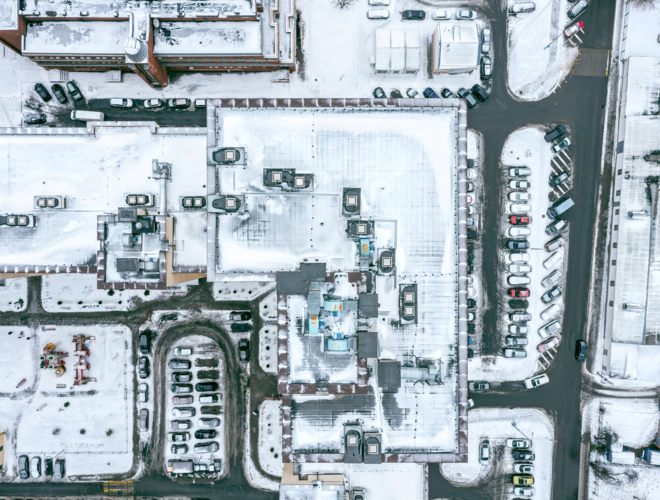
Author
Nigel Payne - Flat Roof Specialist
As winter tightens its grip, the thermal performance of flat roofs becomes a crucial consideration for subcontractors, surveyors, and clients alike. This blog explores the significance of thermal capabilities during the colder months and provides valuable insights for stakeholders in the construction and maintenance sectors.
1. The Winter Challenge: A Closer Look at Flat Roofing
Winter presents unique challenges to flat roofing, with potential heat loss impacting energy efficiency and comfort. All stakeholders must prioritize efficient insulation to combat rising energy costs and maintain a cozy indoor environment.
2. The Science Behind Thermal Performance
Understanding the science of thermal performance is essential. Optimal insulation ensures warmth and contributes to energy efficiency, reducing both environmental impact and operational costs. Subcontractors play a key role in selecting materials with superior thermal properties.
3. Surveyors as Guardians of Quality
Surveyors are tasked with assessing thermal capabilities during roof inspections. Their role involves evaluating insulation materials, installation techniques, and overall structural integrity. Thorough surveys unveil potential issues and guide improvements for superior performance.
4. Regulatory Compliance and Client Expectations
End users expect comfort, and regulatory compliance is crucial. Non-compliance can result in fines and reputational damage. Clients need assurance that their flat roofs meet both expectations and industry standards for thermal performance.
5. What is the Best Insulation for a Cold Flat Roof?
Selecting the right insulation for a cold flat roof is crucial for maintaining thermal performance during winter. Effective options include PIR rigid foam board insulation and mineral wool. The key is to choose insulation materials that provide superior thermal resistance while also addressing specific requirements for the flat roof structure.
6. How Do I Protect My Flat Roof in the Winter?
Protecting your flat roof during winter involves a combination of proactive measures and regular maintenance. Clearing debris, inspecting, and repairing potential issues, strategic snow removal, and ensuring proper insulation are all key steps in safeguarding your flat roof from the challenges of winter weather.
7. What Are the Rules for Cold Flat Roof Insulation?
Adhering to regulations for cold flat roof insulation is essential to ensure compliance with building codes and industry standards. Some general rules include meeting minimum U-value requirements, considering vapor barrier guidelines, and ensuring professional installation to optimize thermal performance.
8. Does Roof Insulation Help in Winter?
Absolutely, roof insulation plays a vital role in maintaining comfort and energy efficiency during winter. Proper insulation reduces heat loss, minimizes the risk of ice dams, and ensures a consistent indoor temperature. Additionally, it helps lower energy bills by reducing the need for excessive heating. Investing in quality roof insulation is a proactive step towards creating a winter-ready and energy-efficient building envelope.
9. Bailey's Expertise: Elevating Thermal Performance Through Surveys
At Bailey, we recognize the critical role of thermal performance in flat roofing, especially during winter. Our surveying services assess your flat roof's thermal capabilities, identify deficiencies, and propose tailored solutions for enhanced performance.
Conclusion:
As you navigate the challenges of winter, Bailey remains your trusted partner in achieving thermal excellence for flat roofs. Our commitment to cost-effective solutions, quality materials, personalized service, and innovative problem-solving ensures that your flat roof not only meets but exceeds expectations. Contact us today for a survey, unlocking the full potential of your roof for warmth, energy efficiency, and compliance with the highest standards.




